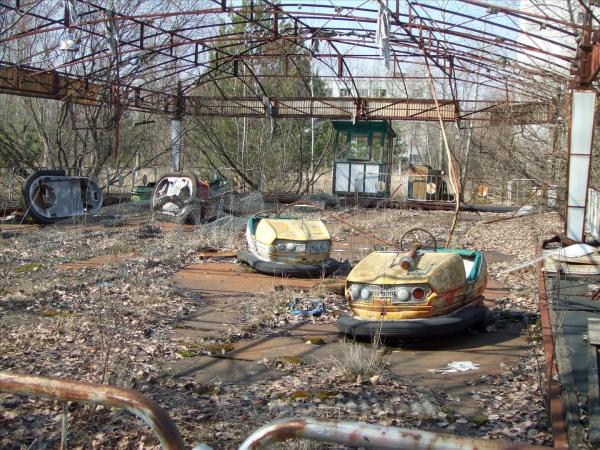The Chernobyl disaster of 1986 represents the world’s worst nuclear accident. The initial explosion killed two employees and exposed 28 workers to lethal doses of radiation. An additional 106 people were hospitalized for several months with acute radiation sickness. During the long clean-up process, a further 750,000 workers, known as ‘liquidators’, were also exposed to varying doses of radiation over several years. On top of this, over 350,000 people were relocated, forced from their homes and the lives they knew.
The fallout from Chernobyl covered tens of thousands of square miles and led to the abandonment of an entire city. The worst area around the reactor became known as the “exclusion zone”, a place where radiation levels will remain high for years. Despite all this, a few elderly people still make their home in the zone.
In the years since the explosion, radiation has dropped to acceptable levels. Radioactive iodine has decayed away, and although substances like plutonium isotopes and americium 241 have much longer half-lives, they do not contribute much to human radiation exposure. The biggest concern is strontium and cesium, which will persist for decades.
Perhaps surprisingly, surveys show that those who stayed in the area or returned to their homes after the Chernobyl disaster seem to have been better able to deal with its aftermath than those who were relocated elsewhere.

Chernobyl continues the unasked-for education in the effects of radiation on humans that began with Hiroshima and Nagasaki. Thyroid cancer, normally rare in children, is high among the Chernobyl children, likely because of milk contaminated with radioactive iodine. Because cancers can take decades to develop, it is very difficult to tie a cancer to an exposure. It has, however, been estimated that over the lifetimes of the hundreds of thousands of residents and emergency workers exposed to radioactive materials at the time, as many as 4,000 fatalities will occur from radiation-related cancers.
Among the most damaging effects of the Chernobyl accident is the impact it has left on the psyche of the people. According to the World Health Organization, the traumatic experience “left many with… a belief that they have no place in society”. Relocation also often left people with no income, and the collapse of the Soviet Union led to the abandonment of many resettlement and rehabilitation programs.
According to the International Atomic Energy Agency, many people are suffering from stress and anxiety due to a fear of radiation. There is also a general feeling of doom among the survivors. Many live destructively, with high levels of drinking and smoking, which can cause as many cancers as the radiation exposure. Women are afraid to have children, birth rates are down and abortions are rising. Many of the liquidators are committing suicide.

While the Chernobyl accident was catastrophic, failure to act in an expedient manner worsened the tragedy. Officials denied the incident, failed to evacuate people fast enough or indeed to warn them about contaminated food. One of the biggest lessons learned from Chernobyl has been the crucial role of trusted leaders in the wake of such horrific events to communicate information accurately and in a timely fashion.
Meanwhile, the survivors of Chernobyl continue to experience long-term mental and physical health problems. Unfortunately, it is often only years after a disaster that we can look back on the lessons learned.

No comments:
Post a Comment